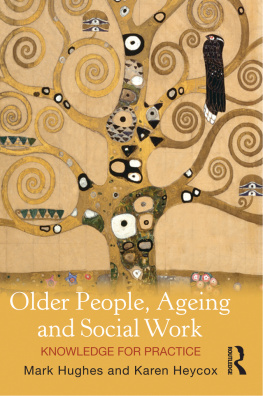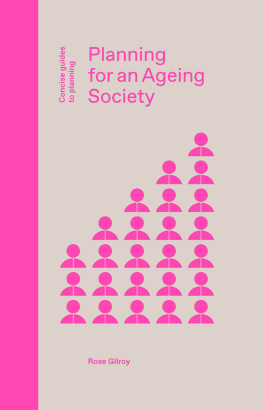and the Meaning of Style
Ross Haenfler
Introduction
Many scholars have noted the spectacular element of subcultural stylesgoths sinister, macabre fashions (Hodkinson 2002); punks sculpted hair and garish makeup (Henry 1989); skinheads boots, braces and shaved heads (Hebdige 1979). For scholars in the Birmingham School tradition, style was an element of semiotic warfare, a symbolic act of resistance among working-class youth to both inequality and mainstream society. Youth associated with music scenes use subcultural styles to help foster a collective identity, to establish authenticity and to set themselves apart from other youth scenes. Less commonly explored questions relate to what happens when spectacular styles meet the demands of adulthood. If articulating an embodied style as a visible, symbolic rejection of dominant social norms and values is at the heart of participation in many music scenes, how do scenesters music identities and styles change as they age and spectacular fashions become undesirable or inconvenient? If many young people use style to set themselves apart from their peers and adult society, how do the meanings of style change as they become adults?
This chapter explores how older adherents of straight edge (sXe)a clean-living youth scene associated with hardcore punk musicinterpret and display their straight- edge affiliation as they age. Straight edgers make a lifetime commitment to abstain from alcohol, tobacco, illegal drugs and often casual sex, communicating their commitment via tattoos and clothing marked with the straight edge symbol, an X (Haenfler 2006; Wood 2006). I draw upon eight years of ethnographic field research and thirty-seven interviews conducted between 1996 and 2004 in Denver, Colorado, and ten follow-up interviews with straight edgers aged over 30 undertaken in 2010. During my fieldwork, I attended over a hundred hardcore shows and socialized with straight-edge kids in a variety of settings. Most of my participants were aged between 17 and 25 (though I also interviewed several 30-somethings). For this current project, I conducted interviews with one woman and nine men, now all over 30 and still straight edge. Nine had earned a university degree (three held postgraduate degrees) and all were employed full time. Their careers included geographer, biologist, community planner, librarian and military officer. Three were married, two were engaged, one had a child and the rest were in committed relationships. I analyzed the interviews in order to search for emergent themes, and compared participants responses with their transcripts and behaviours from the past.
This chapter shows that for most older participants, straight edge becomes less of an embodied stylistic display and more of a personal philosophy or expression of lifestyle politics. Yet periodic and strategic displays of straight-edge affiliation are still meaningful, communicating longevity in the scene, setting an example for younger adherents or signifying continued resistance to conventional norms. The chapter concludes with a discussion of how adherents of many youth scenes transform the meaning of style as they age, modifying and reframing the visible symbols of youth.
Straight Edge Origins and Styles
Straight edge emerged as an offshoot of the US punk scene, specifically from Washington, DC, hardcore band Minor Threat, whose 1981 song Straight Edge provided the movement with its name. Adherents appreciated the question everything and DIY ethos of punk, but abhorred what they viewed as the scenes self-destructive, nihilist drug and alcohol abuse. Scrawling black Xs on their hands (Xing up)appropriated from club owners who marked underage kids handsstraight edgers made it cool not to drink. By the mid-1980s, straight-edge scenes had emerged across the United States, and a variety of hardcore bands identified themselves specifically as straight-edge bands. Straight edge came to mean a lifetime commitment to abstinence, with bands often using their lyrics to promote the advantages of clean living. Beyond the basic tenets of drug-free living, many in the movement embraced vegetarianism, environmentalism, antisexism and antiracism, and other political causes. While still primarily an underground scene, straight edge has spread throughout the world, with vibrant communities from Canada to Argentina, Scandinavia to South Africa and Japan to New Zealand. While many straight edgers eventually sell out and begin drinking, a substantial number maintain a drug-free lifestyle into their thirties and forties.
Like most youth scenes, straight-edge style is not singular or uniform, reflecting the post-subculture theory assertion that the relationship between style, musical taste and identity has become progressively weaker and articulated more fluidly (Bennett and Kahn-Harris 2004: 11). Rather, straight edgers display a wide variety of styles, ranging from the unassuming, preppie emo fashion to the unkempt, bearded, patch-covered style favoured by many crust and gutter punks. The youth crew era of straight edge (198691) and its revival (19972006) featured an athletic look, including cargo shorts, close-cropped hair, band shirts and hooded sweatshirtsa style that many edge kids over 30 maintain today. The mid-1990s saw the emergence of sports team jerseys, camouflage pants and military caps, while the 2000s brought indie rock-inspired tight pants, bandanas, longer, styled and/or dyed-black hair and black clothes, making some straight edgers distinguishable from their emo/goth/punk peers only by their Xs. Women often wear fitted or sleeveless versions of the same shirts, typically avoiding clothing they see as too girly while still adopting some feminine styles. In the past, straight edgers as a group could have been described as somewhat more clean-cut than their punk peers, and even in 2010 most avoided the more ostentatious markers of punk. However, straight edgers increasingly have followed the ongoing trend of body modification present in music (and other) scenes more generally, displaying multiple tattoos, piercings and stretched ears. Through every era of straight edge and each iteration of its style, the X has remained the movements most consistent, visible symbolworn on band shirts, drawn on hands with a marker, stickered on cars, sewn on book bags and tattooed on bodies.
The Strategies of Style
As noted in the Introduction to this book, there is a popular assumption that subculturists grow up and out of their respective scenes, that youthful music communities are a meaningful but relatively inconsequential phase on the path to the more serious endeavours of adulthood. While overstated, such beliefs are not entirely unfounded and might be even more applicable to straight edge, given its strict all-or-nothing ideology: one sip of alcohol forfeits any claim on the identity, and relatively few straight-edge kids remain abstinent past the age of 25. Nevertheless, older straight edgers remain, though they are often less visible than their younger counterparts.
Older straight edgers employ a variety of stylistic strategies, at various times covering or reflexively deploying their edge identity. Some avoid embodying any stylistic references to straight edge despite still claiming the identity, while others proudly sport Xs into their late thirties and beyond, intentionally displaying their edge. Even more straight edgers fall between these extremes, selectively using style in various ways. Bennett (2006: 2223) notes that many of the features attributed by subcultural theorists to young music fansnotably visual style, frequent face-to-face contact, and a publicly articulated collective identityare not necessarily regarded with the same importance by older followers of rock, punk, and other post-1950s popular music genres. Individuals are reflexive in their appropriation and use of particular musical and stylistic resources (2006: 223). Not only are the meanings of style more complex than previously theorized, they are contextual and often change over the course of ones subcultural career. The following sections reveal the meanings older straight edgers attribute to their range of stylistic expression, focusing on what they perceive as the limits of style and then on styles potential uses.
Next page




